How Ledger Allocation Works in Dynamics 365 Finance and Operations?
For organizations managing complex expense structures across departments, projects, or business units, Microsoft Dynamics 365 Finance and Operations (D365 F&O) offers a powerful built-in tool: Ledger Allocation. This feature automates how costs are distributed, improving accuracy, auditability, and financial transparency.
In this blog, we’ll walk through how ledger allocation works in Dynamics 365 Finance and Operations, including setup steps, real-world examples, and how to use statistical accounts and allocation bases for smarter cost management.
What Is Ledger Allocation in Dynamics 365 Finance and Operations?
Ledger allocation in D365 F&O refers to the automated distribution of posted amounts from one account (source) to one or more other accounts (destination) based on predefined rules. These Ledger Allocation Rules eliminate manual calculations and reduce errors when allocating expenses across cost centers or dimensions.
Key Components of Ledger Allocation
To understand how ledger allocation works in Dynamics 365 Finance and Operations, let’s break down the core elements:
1. Ledger Allocation Rule
A rule that defines:
- The source account (from which the amount is drawn)
- The destination accounts (to which the amount is allocated)
- The method of allocation (fixed percentage, equal distribution, or based on statistical accounts)
2. Ledger Allocation Basis
Defines the criteria for distributing the amounts. It can use statistical data (like headcount, number of students, etc.) to proportionally divide expenses.
3. Statistical Account
A non-monetary account used for storing quantities (e.g., number of employees, square footage, student count). These values act as the foundation for dynamic, data-driven allocation.
How to Set Up Ledger Allocation Rules in D365 F&O?
Follow these steps to configure ledger allocation in Dynamics 365 Finance:
Step 1: Create a Ledger Allocation Rule
- Search Ledger Allocation Rule Or General Ledger
-> Allocation -> Ledger Allocation Rule

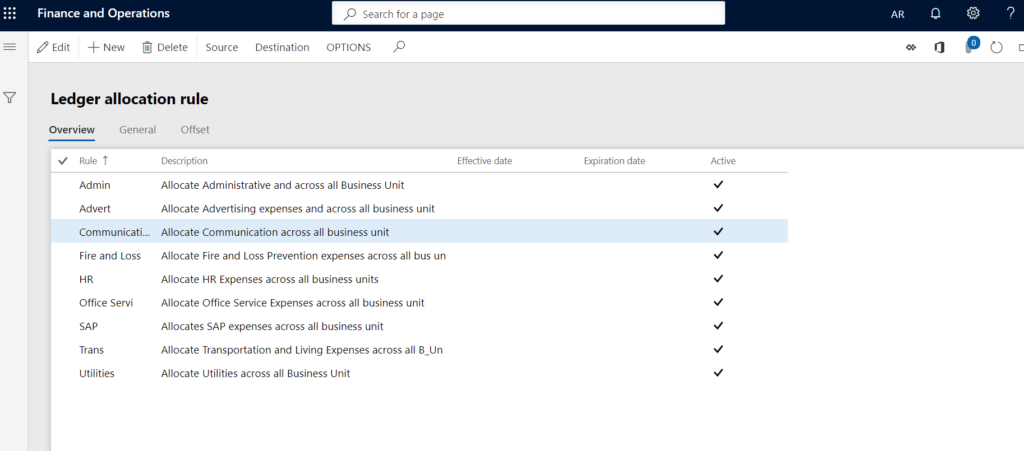
- Click New and Create a new ledger allocation rule. Ex: Admin Expenses (Admin). Fill in the details:
- Rule name
- Description
- Allocation Method
- Journal Name
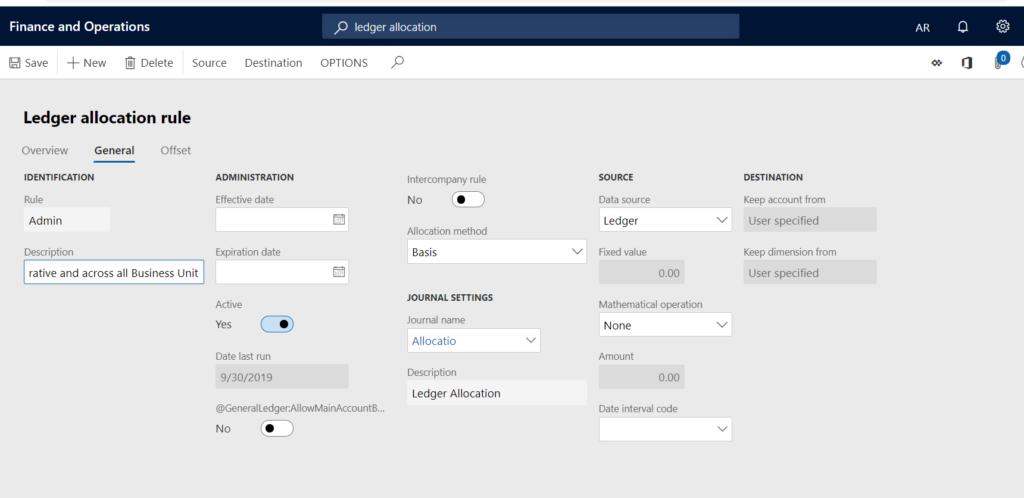
Step 2: Define the Source
- Click on Source icon
- Field setting as financial dimension and select appropriate
business unit - Field Setting as Main Account and select Ledger
main account no.
Note: We are selecting Admin Expenses Ledger as Main account.
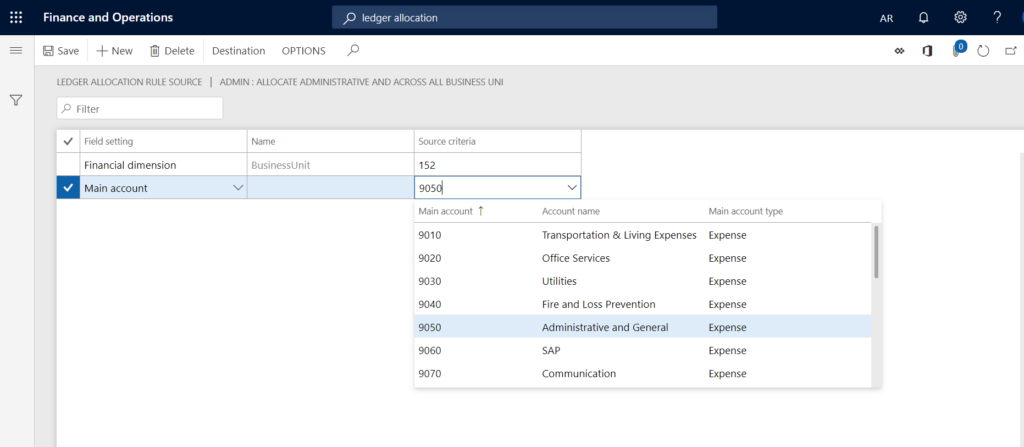
Step 3: Set the Destination
- In the Destination tab, define how the amount should be allocated.
- Use the same main account if you’re splitting by dimension only.
- Define the destination financial dimensions (e.g., different Business Units like D_RE, D_PO, D_ST)

Real-World Example: Allocating Admin Expenses by Student Count
Scenario:
Smith, an account manager at Sydney University, posted 7,000 AED under the Administrative & General Expenses (9050) ledger for the college as a whole (business unit 152-C_TS). However, he wants to reallocate this amount across departments based on the number of students in each.
The following table shows the type of accounts defined and the business units:
| Ledger Account | Account Name |
| 9050 | Administrative & General |
| 9190 | Head Count |
| 9990 | Offset Account |
Following are the dimensions defined:
| Dimension Code | Dimension Name | No. of Students |
| 152-C_TS | College Overall Spending | – |
| 158-D_RE | Religious Education | 15.00 |
| 160-D_PO | Personality Development | 25.00 |
| 161-D_ST | Statistics | 30.00 |
| 159-D_CHE | Chemistry | 10.00 |
Below is the entry posted for 7000 AED
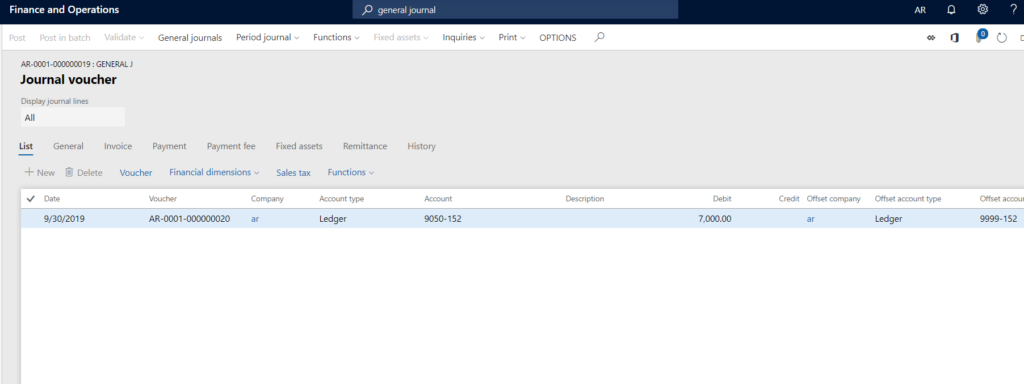
To define no. of student against each department: – 1
Setup a GL Account under Main Account Category as – STATISTICAL
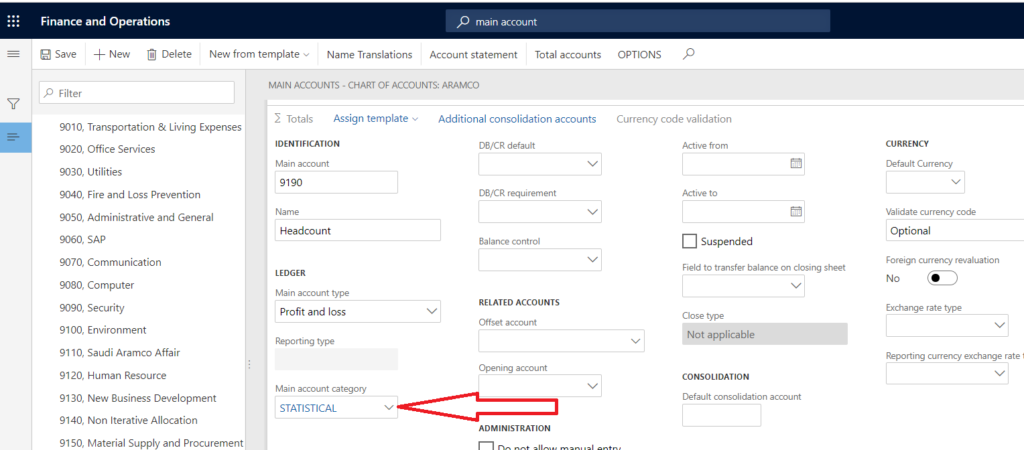
An Example of a journal entry using statistical Account, Posting No. of resource against each course (Business Unit)
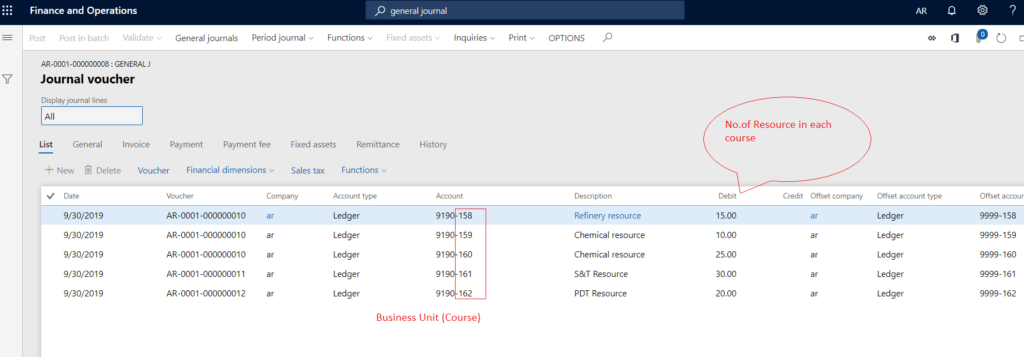
After posting entry with the statistical account, create LEDGER ACCOUNT BASIS.
- General -> Allocation -> Ledger Account Basis
- Click new and create new Ledger Allocation Basis
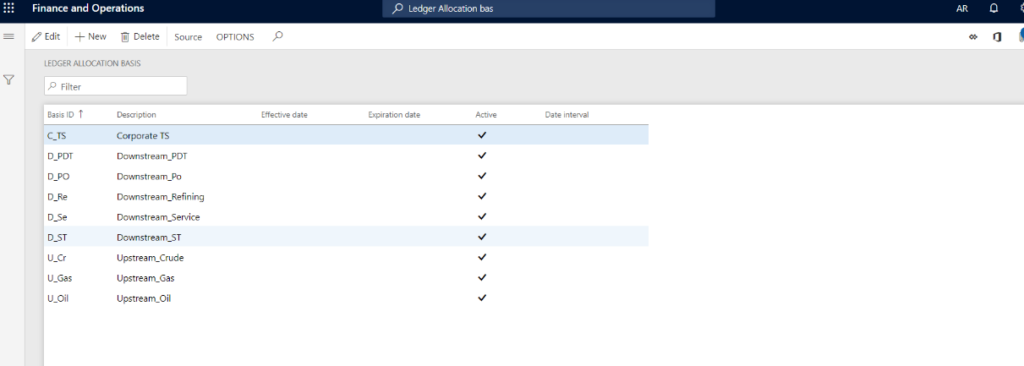
- Define Field Setting Financial Dimension > Business Unit and select the Source Criteria – 152-C_TS
- And the main account as 9190 (Head Count – STATISTICAL ACCOUNT)
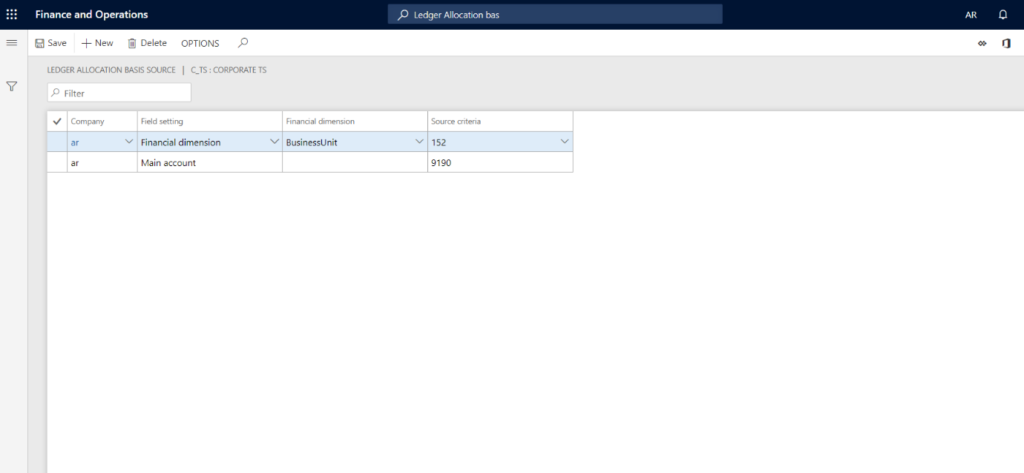
- Save and close it.
To Process Allocation Request:
- Go to General Ledger -> Periodic -> Process Allocation Request
- Select appropriate Basis ID and run the process allocation batch job.

- Click on ok and go to general ledger > Journal > Allocation open last entry and view the detail.
Result:

Why Choose Cetas for Dynamics 365 Finance Implementation?
At Cetas, we specialize in optimizing financial operations for businesses using Microsoft Dynamics 365 Finance. Whether it’s implementing complex ledger allocation logic or designing industry-specific financial workflows, our experts help clients gain greater financial visibility, control, and automation.
Need help configuring Ledger Allocation Rules or Statistical Accounts in D365 F&O?
Contact us today for a tailored consultation.
Conclusion
Understanding how ledger allocation works in Dynamics 365 Finance is critical for finance leaders seeking automation and accuracy in expense distribution. By leveraging ledger allocation rules, statistical accounts, and allocation bases, businesses can ensure smarter financial decisions and cleaner books.

